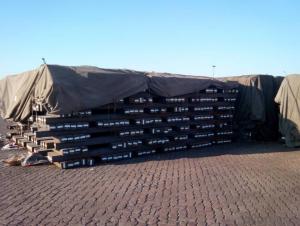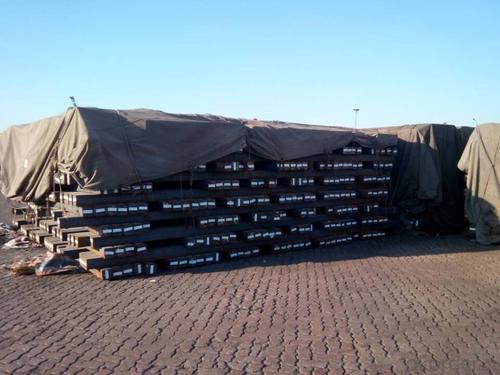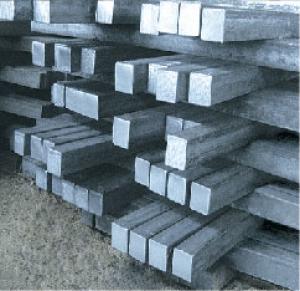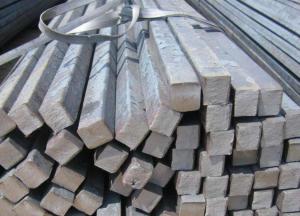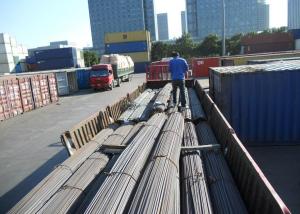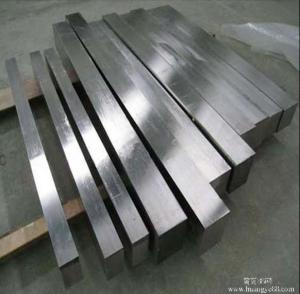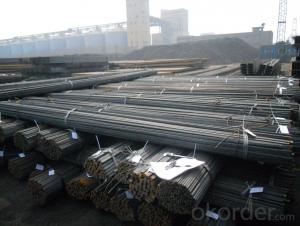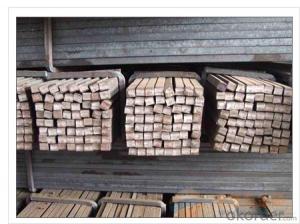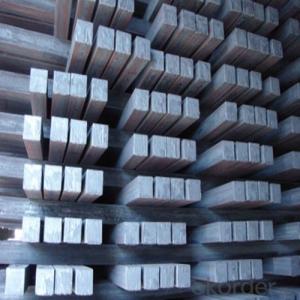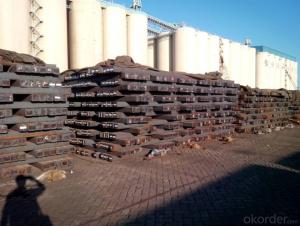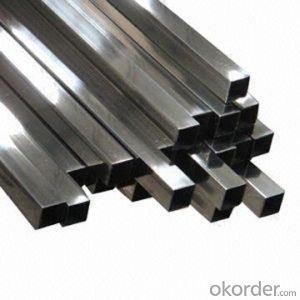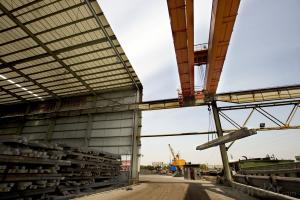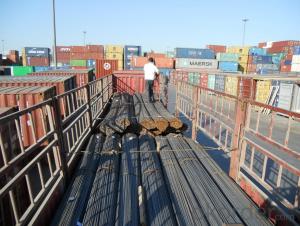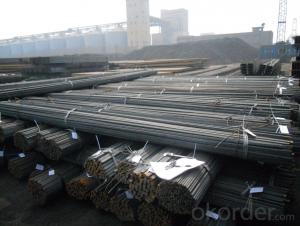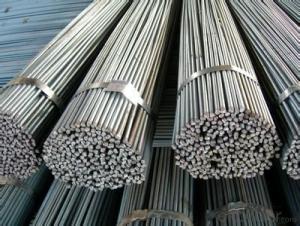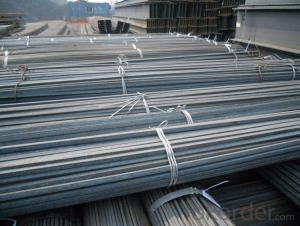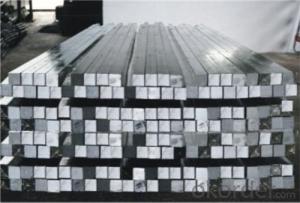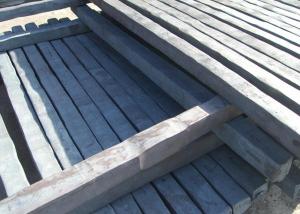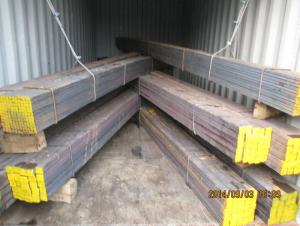Hot Rolled Square Carbon Steel Bar Material Q195
- Loading Port:
- Qingdao
- Payment Terms:
- TT or LC
- Min Order Qty:
- 25 m.t.
- Supply Capability:
- 3000 m.t./month
OKorder Service Pledge
OKorder Financial Service
You Might Also Like
Product Description:
OKorder is offering Hot Rolled Square Steel Barat great prices with worldwide shipping. Our supplier is a world-class manufacturer of steel, with our products utilized the world over. OKorder annually supplies products to European, North American and Asian markets. We provide quotations within 24 hours of receiving an inquiry and guarantee competitive prices.
Product Applications:
The Square Steel is normally used as structure steel.
Row material for other structure steel like steel angles, channels, I-beams, H-beams, etc…
Product Advantages:
OKorder's Hot Rolled Square Steel Bar Material Q195 are durable, strong, and resist corrosion.
Main Product Features:
· Premium quality
· Prompt delivery & seaworthy packing (30 days after receiving deposit)
· Corrosion resistance
· Can be recycled and reused
· Mill test certification
· Professional Service
· Competitive pricing
Product Specifications:
Length of a side(mm) | Theoretical weight(kg/m) | Length of a side(mm) | Theoretical weight(kg/m) |
6 | 0.283 | 32 | 8.04 |
7 | 0.385 | 33 | 8.55 |
8 | 0.502 | 34 | 9.07 |
9 | 0.636 | 35 | 9.62 |
10 | 0.785 | 36 | 10.17 |
11 | 0.950 | 38 | 11.24 |
12 | 1.13 | 40 | 12.56 |
13 | 1.33 | 42 | 13.85 |
14 | 1.54 | 45 | 15.90 |
15 | 1.77 | 48 | 18.09 |
16 | 2.01 | 50 | 19.63 |
17 | 2.27 | 53 | 22.05 |
18 | 2.54 | 55 | 23.6 |
19 | 2.82 | 56 | 24.61 |
20 | 3.14 | 58 | 26.4 |
21 | 3.46 | 60 | 28.26 |
22 | 3.80 | 63 | 31.16 |
23 | 4.15 | 65 | 33.17 |
24 | 4.52 | 68 | 36.3 |
25 | 4.91 | 70 | 38.49 |
26 | 5.30 | 75 | 44.16 |
27 | 5.72 | 80 | 50.24 |
28 | 6.15 | 85 | 56.72 |
29 | 6.60 | 90 | 63.59 |
30 | 7.06 | 95 | 70.85 |
31 | 7.54 | 100 | 78.50 |
Notes:
1, The theoretical weights in the list, base on the density of 7.85 g/cm3.
2, The numbers with mean that they are not regulars or we don’t offer them.
-List 2. The allowed tolerance of Square Steel:
Length of a side(mm) | Allowed Tolerance | ||
Group1 | Group2 | Group3 | |
5.5~7 | ±0.20 | ±0.30 | ±0.40 |
7~20 | ±0.25 | ±0.35 | ±0.40 |
20~30 | ±0.30 | ±0.40 | ±0.50 |
30~50 | ±0.40 | ±0.50 | ±0.60 |
60~80 | ±0.60 | ±0.70 | ±0.80 |
80~110 | ±0.90 | ±1.0 | ±1.1 |
110~150 | ±1.2 | ±1.3 | ±1.1 |
150~190 | ―― | ―― | ±2.0 |
190~250 | ―― | ―― | ±2.5 |
Chemical Composition:
Standard | Grade | Element (%) | ||||
GB | Q195 | C | Mn | S | P | Si |
≤0.12 | ≤0.50 | ≤0.04 | ≤0.035 | ≤0.3 | ||
-Method of deoxidation: F, b, Z
Usage/Applications of Square Steel:
-The Square Steel is normally used as structure steel.
-Row material for other structure steel like steel angles, channels, I-beams, H-beams, etc…
Packaging & Delivery of Square Steel:
-Packing Detail: The products can be packed in bundles by steel wires.
-Delivery Detail: 30~45 working days after receive buyer’s T.T. or L/C.
Transportation & Marking:
-Transportation:
1, The products can be delivered by bulk vessel or by container.
2, The maximum quantity of loading of container is 25 tons.
3, The products usually are transported to the nearest port from the production place.
-Marks:
1, Color mark: there will be color marking on both ends of the bundles for the cargo delivered by bulk vessel. That makes is easily to distinguish at the destination port.
2, Tag mark: the tag marks will be tied up to each bundle. The information is usually including supplier’s logo and name, product name, made in China, products’ specifications and other information requested by customers.
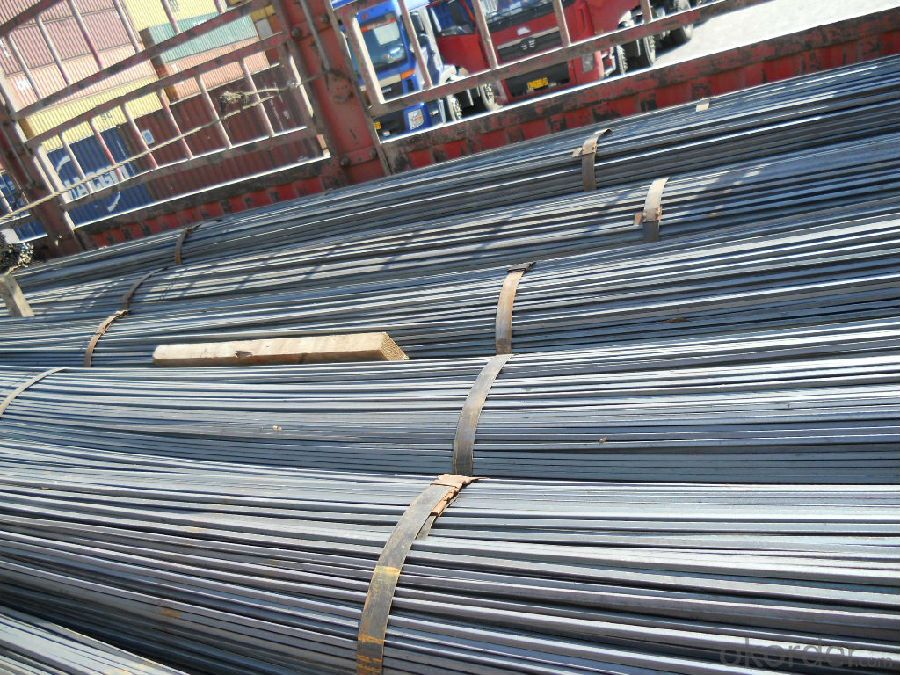
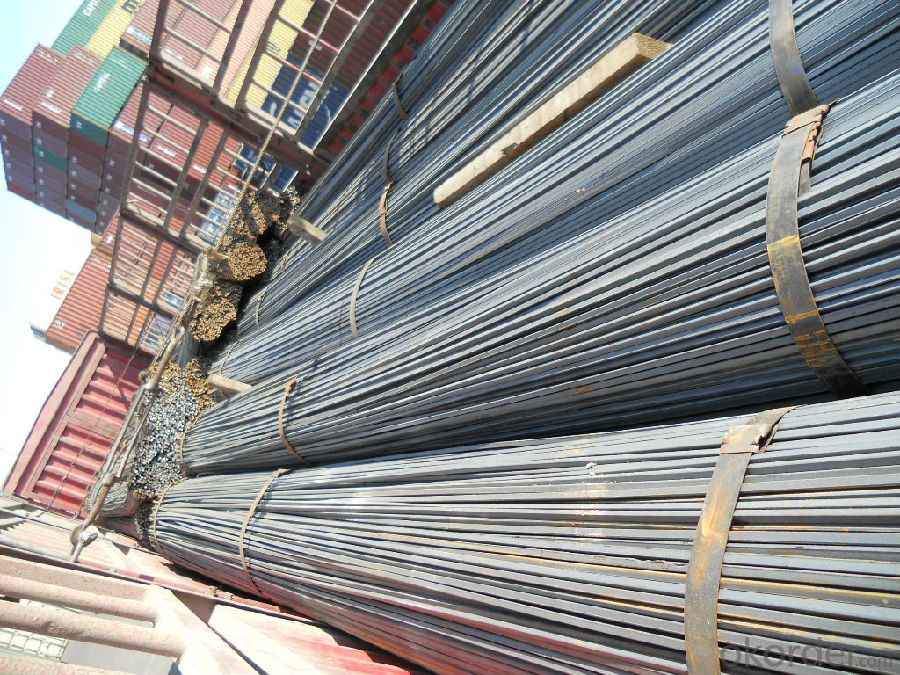
FAQ:
Q1: Why buy Materials & Equipment from OKorder.com?
A1: All products offered byOKorder.com are carefully selected from China's most reliable manufacturing enterprises. Through its ISO certifications, OKorder.com adheres to the highest standards and a commitment to supply chain safety and customer satisfaction.
Q2: How do we guarantee the quality of our products?
A2: We have established an advanced quality management system which conducts strict quality tests at every step, from raw materials to the final product. At the same time, we provide extensive follow-up service assurances as required.
Q3: How soon can we receive the product after purchase?
A3: Within three days of placing an order, we will begin production. The specific shipping date is dependent upon international and government factors, but is typically 7 to 10 workdays.
Q4: What makes stainless steel stainless?
A4: Stainless steel must contain at least 10.5 % chromium. It is this element that reacts with the oxygen in the air to form a complex chrome-oxide surface layer that is invisible but strong enough to prevent further oxygen from "staining" (rusting) the surface. Higher levels of chromium and the addition of other alloying elements such as nickel and molybdenum enhance this surface layer and improve the corrosion resistance of the stainless material.
- Q: Can a steel square be used for roofing tasks?
- Yes, a steel square can be used for roofing tasks. It is a versatile tool that can be used for measuring and marking angles, cutting rafters, and laying out roof lines accurately.
- Q: What are some common applications for a steel square in fence construction?
- In fence construction, a steel square proves to be a versatile and reliable tool. Its precision and durability make it a common choice for fence builders. Here are some typical uses of a steel square in this field: 1. Accurate angle measurement and marking: To guarantee the correct alignment and levelness of fence posts and rails, a steel square is frequently employed to precisely measure and mark angles. 2. Squareness verification: Ensuring that corners are perfectly square is essential in fence construction. A steel square becomes an indispensable aid in this task, as it allows builders to confirm the alignment of fence panels and the overall stability of the structure. 3. Determining lengths and cuts: Fence rails, pickets, and panels need to be cut to the correct length. A steel square can be effectively utilized for measuring and marking these dimensions, ensuring uniformity and seamless fitting of all components. 4. Creation of straight lines: A steel square is invaluable for establishing straight lines, whether it is marking the initial boundary or aligning fence elements. By using the square's edge as a guide, builders can achieve greater precision and aesthetic appeal in their construction. 5. Levelness assessment: Fence posts and rails must be level for optimum performance. By placing a steel square against the vertical surface, builders can determine if adjustments are needed to achieve perfect vertical alignment. 6. Gate frame squareness: When constructing a gate, achieving a perfectly square frame is crucial to prevent sagging and ensure smooth operation. A steel square is an indispensable tool for this purpose, providing accuracy in the construction process. Overall, a steel square is an invaluable tool in fence construction. Its ability to provide accurate measurements, levelness, and squareness results in the creation of professionally built and sturdy fences.
- Q: What are the different ways to hold a steel square when making measurements in metalworking?
- There are several different ways to hold a steel square when making measurements in metalworking, depending on the specific task at hand and personal preference. Here are a few common methods: 1. Handheld Method: This is the most basic and commonly used method. Simply hold the steel square firmly in your hand and align it with the edge or surface you're measuring. Ensure that the square is flush against the material to get accurate measurements. 2. Clamping Method: When measuring large or heavy pieces of metal, it may be challenging to hold the square with one hand. In such cases, clamping the square to the workbench or workpiece can provide stability. Use a C-clamp or a quick-release clamp to secure the square in place, ensuring that it does not move during the measurement process. 3. Magnetic Method: Some steel squares have built-in magnets, allowing them to stick to metal surfaces. This can be useful when you need to measure a piece that is already attached to a magnetic surface, such as a machine or tool. Simply place the square on the metal surface, and it will stay in place due to the magnetic force. 4. Vise Method: A vise is a common tool in metalworking, and it can be utilized to hold a steel square securely. Open the vise, place the square between the jaws, and tighten the vise to grip the square tightly. This method is particularly useful when you need both hands free to perform other tasks while keeping the square in place. 5. Double-Sided Tape Method: In situations where you don't want to leave any marks or damage the material, you can use double-sided tape. Apply a strip of strong adhesive tape to one side of the steel square and press it firmly onto the surface you're measuring. The tape will hold the square securely, allowing you to take measurements without any obstruction. Remember, regardless of the method you choose, always ensure that the steel square is aligned properly and tightly held to obtain accurate measurements in metalworking.
- Q: What are some common applications for a steel square in tile installation?
- A steel square, also known as a framing square or carpenter's square, is a versatile tool that can be useful in tile installation. Some common applications of a steel square in tile installation include: 1. Checking squareness: A steel square is ideal for checking if the walls and corners are perfectly square. This is crucial in ensuring that the tiles are laid straight and in alignment. 2. Marking straight lines: A steel square can be used to mark straight lines on the floor or walls, which helps in guiding the installation process. It ensures that the tiles are placed evenly and in a neat pattern. 3. Determining tile layout: By using a steel square, you can easily lay out a grid pattern for the tiles. This allows you to determine the size and placement of each tile accurately, creating a balanced and symmetrical design. 4. Cutting tiles: When cutting tiles, a steel square can act as a guide to ensure precise and straight cuts. By aligning the square with the marked line on the tile, you can score and cut along the edge, resulting in clean and accurate cuts. 5. Creating a slope: In some cases, a steel square can be used to create a slope for drainage purposes. By tilting the square at a specific angle, you can determine the slope needed and mark the appropriate lines for the tile installation. Overall, a steel square is a valuable tool in tile installation as it helps ensure accuracy, straight lines, and proper alignment. It can save time and effort by providing a reliable guide for various tasks involved in tiling projects.
- Q: Can a steel square be used for setting up a router table?
- Yes, a steel square can be used for setting up a router table. A steel square is a useful tool for ensuring accurate measurements and angles, which are important for aligning the router table and achieving precise cuts.
- Q: Can a steel square be used for checking the alignment of door frames?
- Yes, a steel square can be used for checking the alignment of door frames. A steel square, also known as a combination square, is a versatile tool that consists of a ruler and an adjustable square head. It is commonly used in woodworking and carpentry for measuring, marking, and checking angles. To check the alignment of a door frame using a steel square, you would first ensure that the square is set to a 90-degree angle. Then, you would place the square against the inside edge of the door frame, making sure that it is flush with both the top and side of the frame. By visually inspecting the alignment of the square with the frame, you can determine if the frame is perfectly square or if it needs adjustment. Furthermore, a steel square can also be used to check the hinge side of the door frame. By placing the square against the inside edge of the frame and extending it along the length of the frame, you can ensure that it is straight and not warped. This is important for proper installation and smooth operation of the door. In conclusion, a steel square is a useful tool for checking the alignment of door frames. Its versatility and accuracy make it a reliable choice for carpenters, contractors, and homeowners alike.
- Q: How do you use a steel square to measure and mark 45-degree angles?
- To use a steel square to measure and mark 45-degree angles, follow these steps: 1. Start by placing the steel square on the material you want to mark the angle on. Ensure that one of the edges of the square is aligned with the edge of the material. 2. Locate the 45-degree angle on the steel square. This is typically marked as a diagonal line that intersects the 90-degree angle. 3. Position the steel square so that the diagonal line representing the 45-degree angle aligns with the edge of the material. Make sure that the other edge of the square is parallel to the opposite edge of the material. 4. Once the steel square is properly aligned, use a pencil or a scribe to mark the material along the edge of the square. 5. To ensure accuracy and precision, it is recommended to mark the angle on both sides of the material. This can be done by flipping the steel square and repeating the process on the opposite side. By following these steps, you can effectively use a steel square to measure and mark 45-degree angles with accuracy and consistency.
- Q: How do you use a steel square for marking and cutting angled mortise and tenon joints?
- To use a steel square for marking and cutting angled mortise and tenon joints, start by setting the desired angle on the steel square's blade and stock. Then, align the square against the workpiece and mark the layout lines for the mortise and tenon using the blade and stock. Next, use a marking knife or a pencil to score along the layout lines. This will serve as a guide for making the cuts. Finally, use a saw or chisel to cut along the marked lines, ensuring accuracy and precision by referencing the steel square throughout the process.
- Q: How do you use a steel square to ensure the correct angle for a bridle joint?
- To use a steel square to ensure the correct angle for a bridle joint, follow these steps: 1. Start by marking the thickness of the stock on both the face and edge of the wood that you will be joining. This will help you align the steel square accurately. 2. Place one leg of the steel square against the face of the stock and the other leg against the edge, ensuring that the square is aligned with the marked lines. Make sure that the square is firmly held in place. 3. Once the steel square is aligned, use a pencil or marking knife to mark the angle on the wood. This will indicate where you need to make your cuts for the bridle joint. 4. Repeat the process on the other piece of wood that you will be joining together. It's important to ensure that both pieces have the same angle marked to create a proper fit. 5. Now, you can proceed to make your cuts based on the marked lines. Use a saw or chisel to carefully remove the waste material within the marked area. Take your time and make precise cuts to achieve a clean and tight bridle joint. Remember, the accuracy of your bridle joint relies on the proper alignment and marking using the steel square. Take your time to double-check the positioning and angle before making any cuts. With practice and attention to detail, you'll be able to create strong and visually appealing bridle joints using a steel square.
- Q: How do you use a steel square to determine the length of a rafter?
- To determine the length of a rafter using a steel square, you can follow these steps: 1. Place the steel square's shorter leg (tongue) on the rafter's edge, aligning it with the top of the ridge board or the top of the wall plate. 2. Hold the square firmly and rotate it until the longer leg (blade) is perpendicular to the rafter. 3. Mark a line along the outer edge of the blade on the rafter. 4. Measure the distance from the point where the tongue met the rafter's edge to the marked line. This measurement corresponds to the length of the rafter.
Send your message to us
Hot Rolled Square Carbon Steel Bar Material Q195
- Loading Port:
- Qingdao
- Payment Terms:
- TT or LC
- Min Order Qty:
- 25 m.t.
- Supply Capability:
- 3000 m.t./month
OKorder Service Pledge
OKorder Financial Service
Similar products
Hot products
Hot Searches
Related keywords
